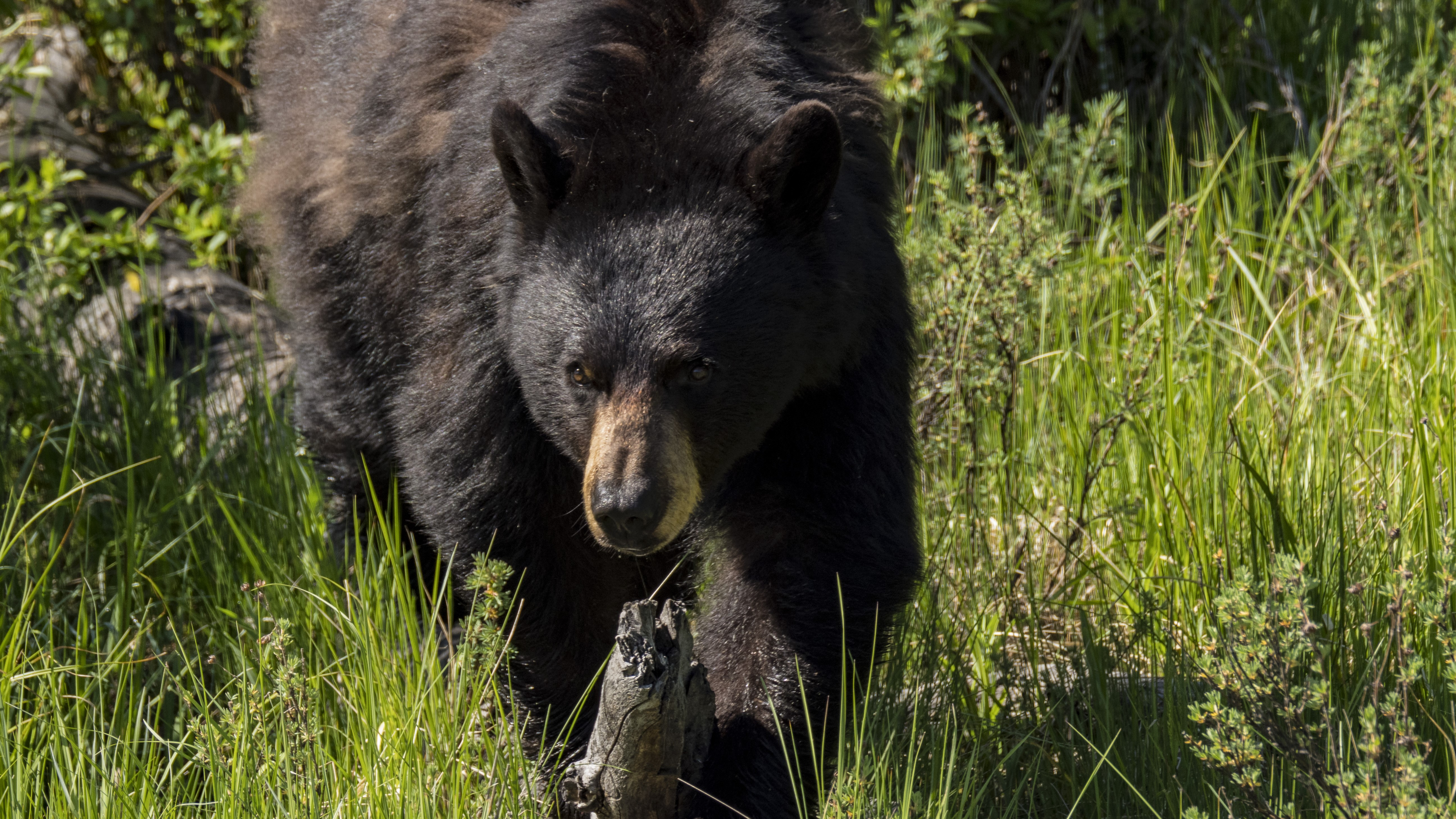
A Canadian hunter has shared a shocking video showing exactly what it looks like to be charged and knocked down by a raging black bear. The clip shows the man batting the animal away with his bow as it knocks him down, sending his camera tumbling to the ground. Incredibly, he escaped with only a few bruises, and the bear escaped unharmed.
The video (which you can see below) is a few years old, but has recent begun recirculating on social media thanks to infamous Instagram account TouronsOfNationalParks. The account usually highlights bad behavior at sites of natural beauty, such as people hitting golf balls into the Grand Canyon and leading their children onto slippery rocks by waterfalls, but sometimes the videos and photos are just a reminder to respect wildlife and give animals plenty of space.
Bears are currently tucked up in their dens for the winter, so your odds of running into one are relatively low, but there's still a chance that you may come across one while hiking. During the cold months, the animals enter a deep sleep called torpor, where their heart rate, breathing rate, and body temperature all drop, reducing the need to eat and excrete.
However, they may still wake to defend themselves from attack, give birth (which happens around two months into torpor) and seek out additional food. During the latter activity they will briefly leave the den, making a close encounter possible. For more details, see our guide do you still need to worry about bears in winter.
Bear safety
Bear attacks are rare, but there are important steps you can take to keep yourself safe. First of all, be prepared and make sure you carry bear spray and know how to use it. Bears prefer to be left alone, so you should also noise while you hike, chatting to your companions as you go, to give animals a chance to leave the area before you arrive.
If you spot a bear, resist the temptation to run because this can trigger the animal's instinct to chase. If the animal hasn't seen you, back away while trying to remain downwind, leave the area and either head back or find an alternative route. Pick up any small children and keep them close.
If the bear does see you, avoid making eye contact and back up. Avoid turning your back so you can watch the animal's behavior and watch out for warning signs. A bear that rears up on its hind legs isn't necessarily aggressive; it's likely just curious and trying to get a better view or pick up a scent.
For more tips, and what to do if a bear charges, check out our guides what to do if you meet a bear on the trail and wildlife safety: eight tips for unexpected encounters.
- The best binoculars: enjoy watching wildlife from a safe distance







